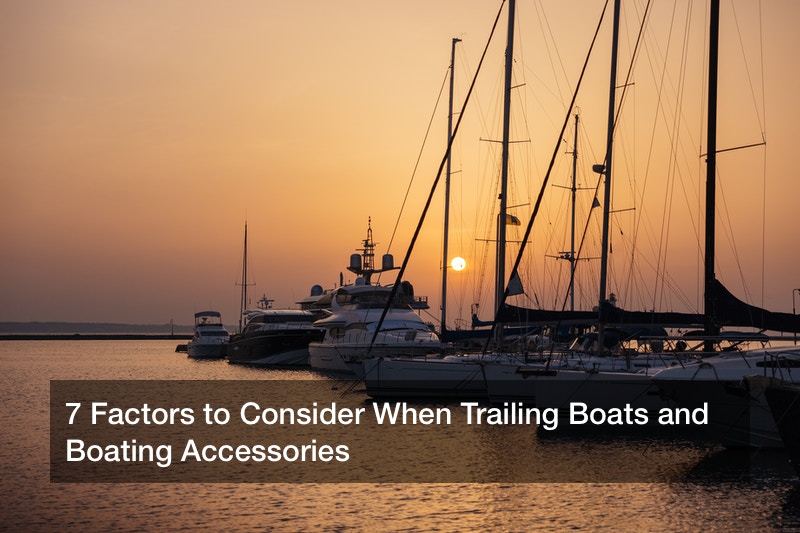
Are you tired of paying for the safekeeping of your pontoon boats or fishing boat at the local pier or marina? Do you often need to transport your boat to new cruising grounds and fishing spots? If your answer to any of these questions is a yes, then you need the right gear, vehicle, and knowledge on safe boat trailing.
This post highlights precautions and tricks and hacks for safe trailing and roof-racking of boats and boat accessories.
1. Choose a Truck or SUV Capable of Hauling Your Boat
An ideal boat towing vehicle should have the right Gross Axle Weight Rating (GAWR) and Gross Vehicle Weight Rating (GVWR). Your boat, trailer, and the towing vehicle often have these ratings indicated in their manuals. As a rule of thumb, you shouldn’t exceed 80% of the set weight rates for both trailers and towing vehicles. Always check for these specifications when looking for a trailer or a used boat for sale.
2. Get the Right Towing Gear from Your Boat Dealers
You should choose a trailer that matches your vehicle’s towing capacity, and one that can hold your boat size. You should also have the right safety chains and hitch that matches the class of your trailer. When buying a used boat for sale, ensure that its size matches your trailer’s capacity. Otherwise, you may have to buy a new trailer.
Your chosen towing vehicle and trailer should also have all the primary boat trailing accessories. These equipment include transmission coolers, straps, and extended towing mirrors. When buying any new or used boat for sale, ensure that it comes with such accessories because you’ll need to transport your boat at one time or another.
3. Ensure Your Vehicle and the Towed Components get Insured
Whether you’re planning on using a new or used boat for sale, the towing vehicle, trailer, and boat should all get insured. Your driving license and experience should also meet the necessary standards set for trailer towing drivers.
4. Follow Proper Hitching and Trailer and Load Setting Steps
Before hitching your trailer and strapping the boat to it, ensure that all parts aren’t rusty, crooked, broken, or compromised in any way. You should inspect all components and wheels of the trailer to ensure that they have the right pressure. The wheels should also have a proper tread for better braking.
5. Ensure the Load and All Its Projections Are Safe
You should position your trailer and boat in a safe way that ensures that all overhangs of the wide load don’t cause harm to other road users. The protrusions of your shipment should also not contravene the law, and the set height, length, and width standards on overhangs. You should also use bright-colored markers to mark protrusions for better visibility for other road users.
If you have to transport your boat by night, you should mark such load overhangs by use of bright-colored lighting and reflectors as stipulated in the Highway Code.
6. Test Drive Your Set-Up after Completion
You should test drive the setup after hitching the trailer and after loading it for a short distance.
7. Observe Driving Precautions
Stay within the speed limits specified for your towing setup. Ideally, you shouldn’t drive fast, and your turns should be as wide as possible. Ensure that your trailer’s tires don’t hit the curb or slide on the edges of the road.
Also, ensure that you don’t do sudden braking. You should also leave enough room between you and the vehicles ahead for secure braking. Don’t carry passengers on your trailer or within your loaded boat.
Small-sized boats of about 26 feet make up 95% of the boats in the U.S. It is easy and convenient to transport these cruising or fishing boats on towed trailers to local waterways and fishing and cruising spots. But you’ll need proper towing gear for safe towing.
You can buy such gear from your local boat dealer who sells new or any used boat for sale. Apart from acquiring the right towing equipment, trailer, and vehicle, you’ll also need to follow the cited precautions and tips for safe and secure towing.
